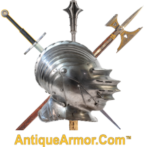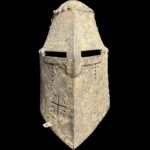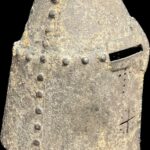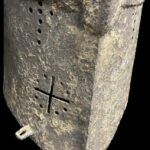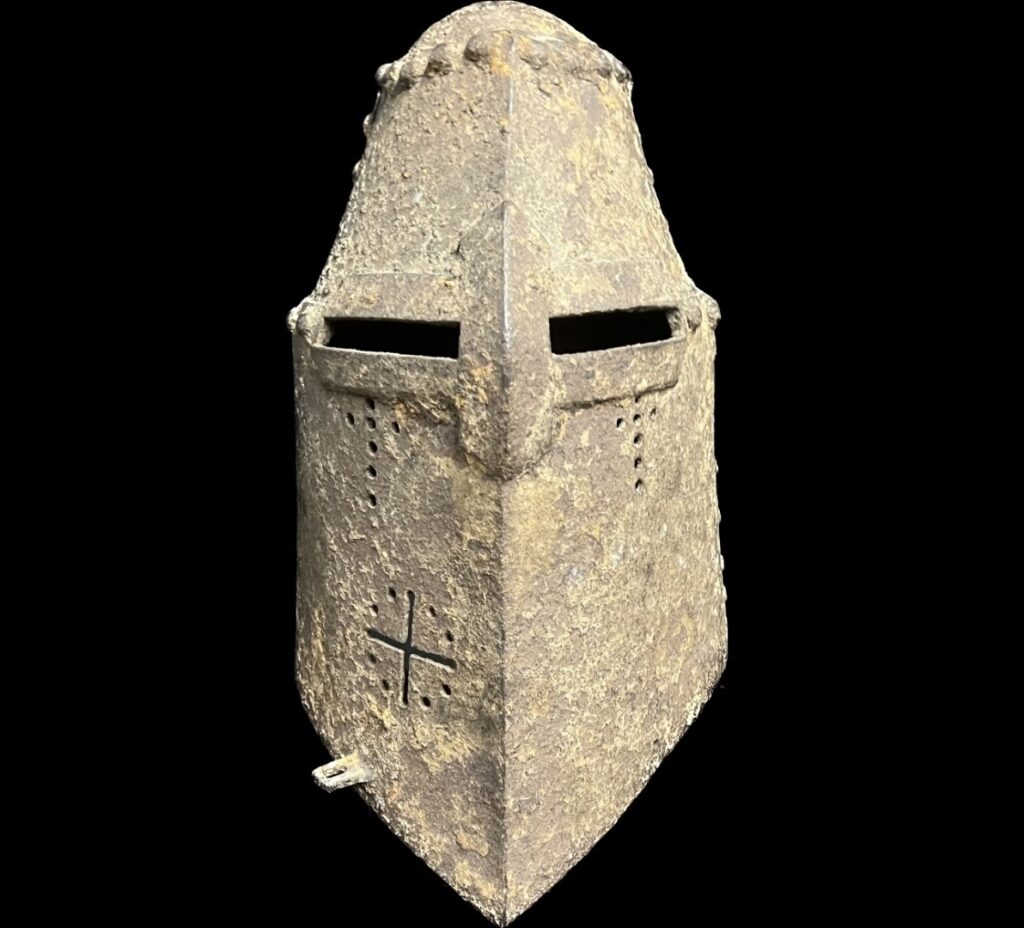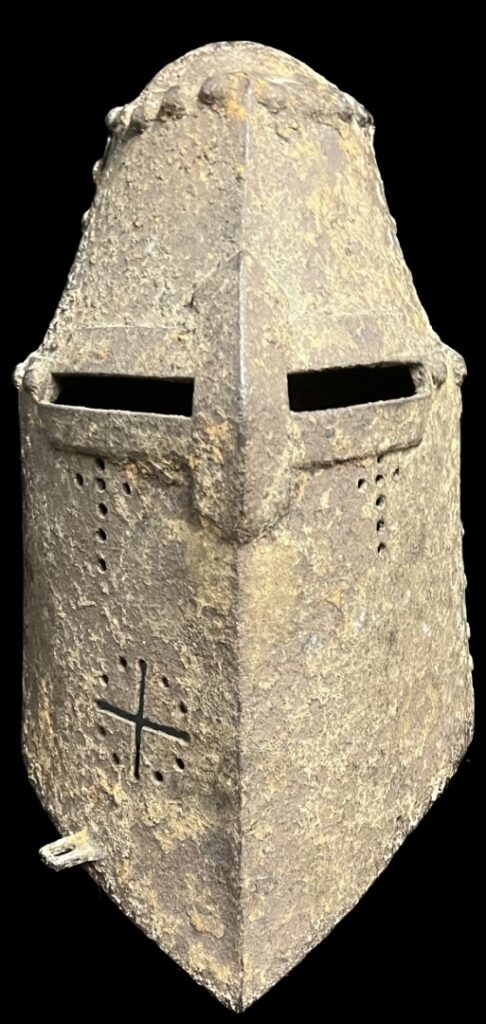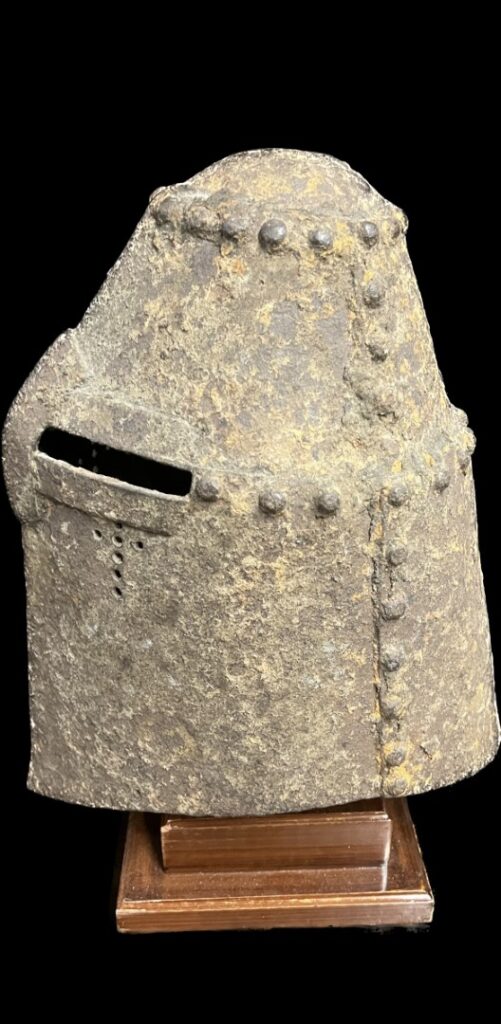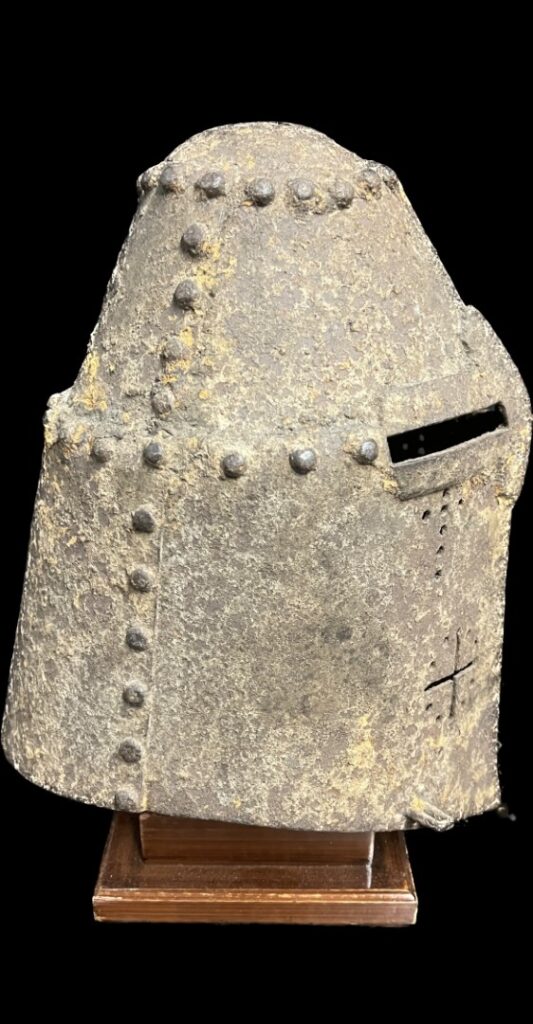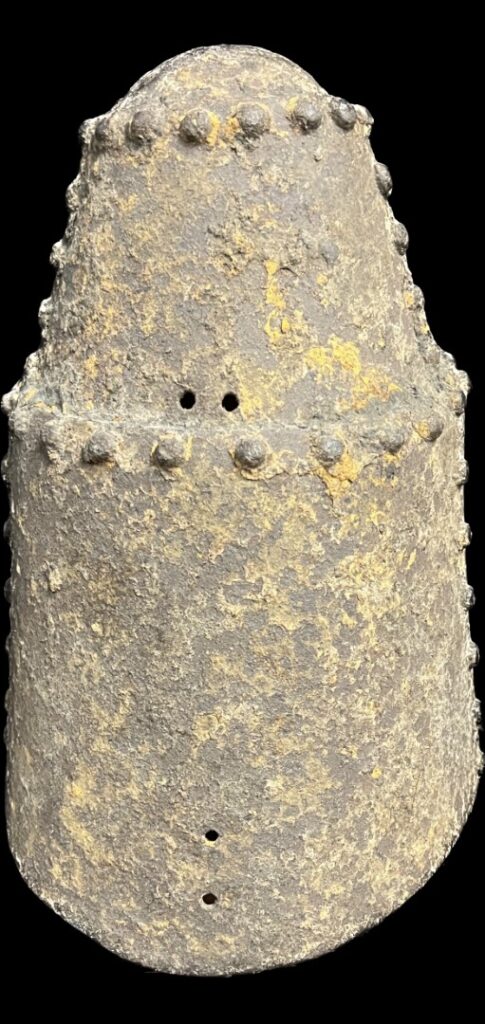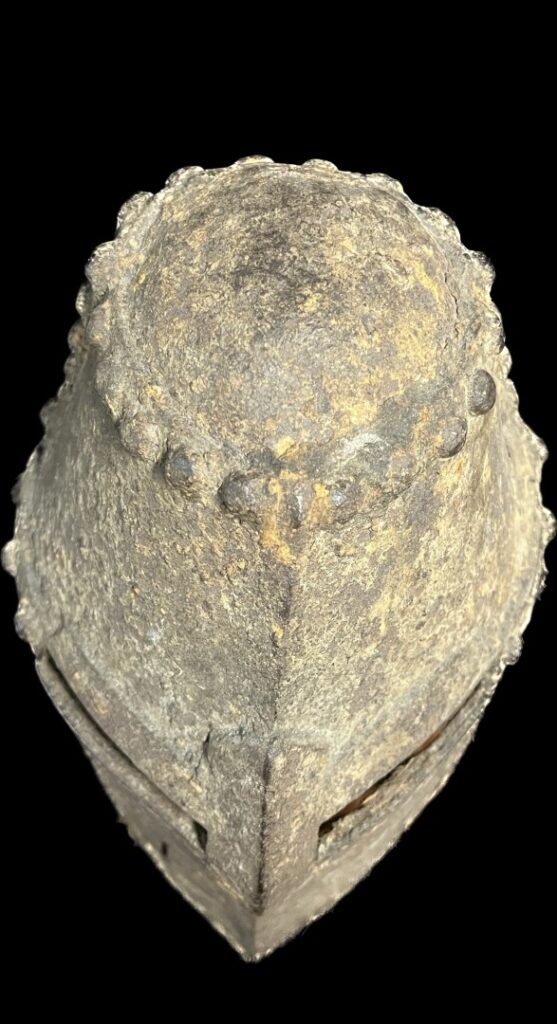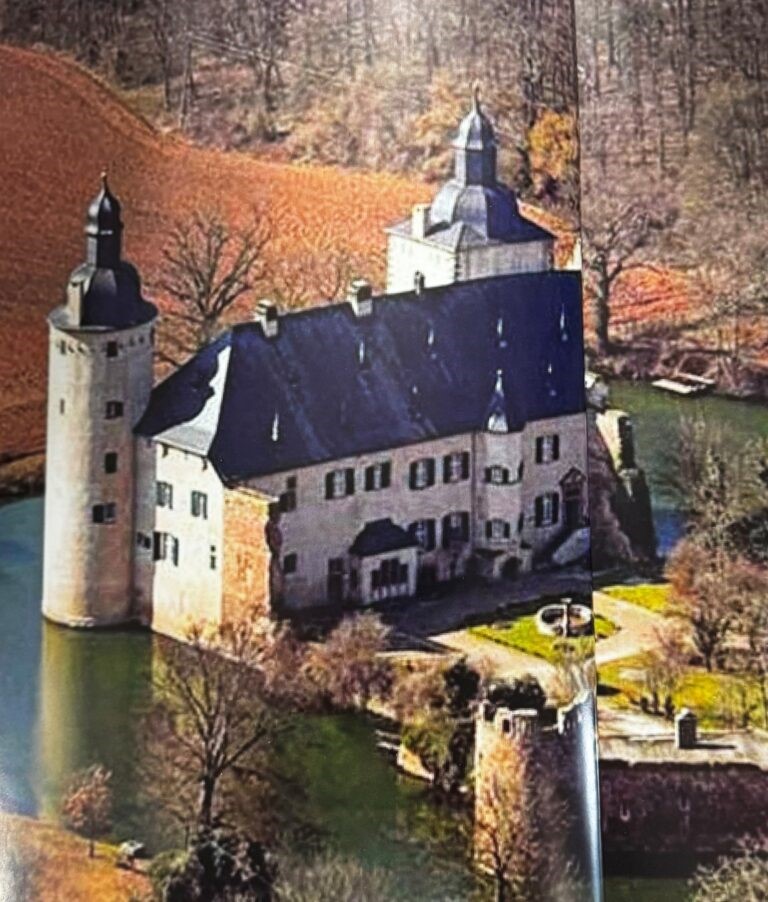1754) GREAT HELM POST-1400’s POSSIBLY MADE FOR A CHURCH TOMB: Nothing exemplifies chivalry and knighthood like a great helm!
Introduction: The Great Helm is the most sought-after Medieval helmet by collectors. Although thousands of great helms were made from 1080 to 1250 and used throughout Europe, only about 20 known examples have survived. These examples are spread throughout European museums. Contrary to what you see on the internet, there are no real period great helms in private hands. The closest you will be to owning a Great Helm is the example under discussion which by tradition was made in the early 1600’s for funerary purposes or jousting reenacting. English churches and cathedrals, up until the 17th century, had the tradition of hanging helmets over tombs. Since these helmets were for decorative purposes, many were composite or strictly made for funerary purposes!
Discussion: The Great Helm began to evolve around the middle of the 12th-century. It was the most common choice of a defensive helmet during the 13th-century. The great helm is a full-coverage helmet, with slits for the eyes, and small ventilation holes, called breaths, through the lower portion of the helmet. A cross-shaped reinforcement often supported the nasal bridge and reduced the risk of weakness from the eye slits and vents. The great helm was an effective protective choice but offered less comfort and practicality than later helmets with hinged or pivoting visors. A few later examples of the great helm illustrate some of the advancements found in other types of helmets, including hinged faceplates of various types. The great helm was the preferred helmet of the knight during 1080–1250. However, it continued to be used long after 1250. The great helm remained in use in a ceremonial context and/or for recreational jousting through much of the 14th-century.
Development: There are four major developments the Great Helm experienced during different stages of its 200-year life.
Variant One… Flat Top: The flat-top design, circa 1080, was the first type of great helm design. However, it had a severe design flaw. Medieval artwork suggests that because of its flat surface when struck on top, the knight would absorb the entire hit with almost the full force of the impact.
Variant Two…. Barrel-Shaped Top: The top of the helm was barrel-shaped. Around 1250, great helms were modified into Variant Two. The difference was the deeper front compared with the back, which was not as pronounced. Perhaps the barrel top was added to avoid the design flaw of Variant One.
Variant Three…. Conical Top: The next development was around 1275. It was the development of a conical top, as shown. Since the conical shape was more pronounced than the barrel shape, it could be a further development to remedy the design flaw of Great Helm Variant One or perhaps as a fashion statement.
Variant Four…. Multiuse: The last stage of development for the Great Helm started around 1390. It increased in size, thickness, and weight. Many helms were attached at the top with funerary and heraldry. Many were exotically adorned with giant horns and other outlandish decorations. During this period, the great helm was used primarily for parades, funerary decoration (see page 114 in my book), and jousting (see page 179 in my book).
Provenance: From a Nobles armory collection, picture attached.
Conclusion: Currently, I have a standing order for 1 million US dollars for a Great Helm. The truth is, at this price, I could probably sell more than one! The last real period Great Helm was sold in 1975 and bought by the Royal Collection for 500,000 GBP, which at the time was about 1 million US dollars. So, as you can see, a Great Helm for one million US dollars is a bargain. The problem is, as I have previously stated, there are none. The closest you will ever get to owning a Great Helm is the example under discussion………. ACT NOW……. This one should sell fast!!!*
